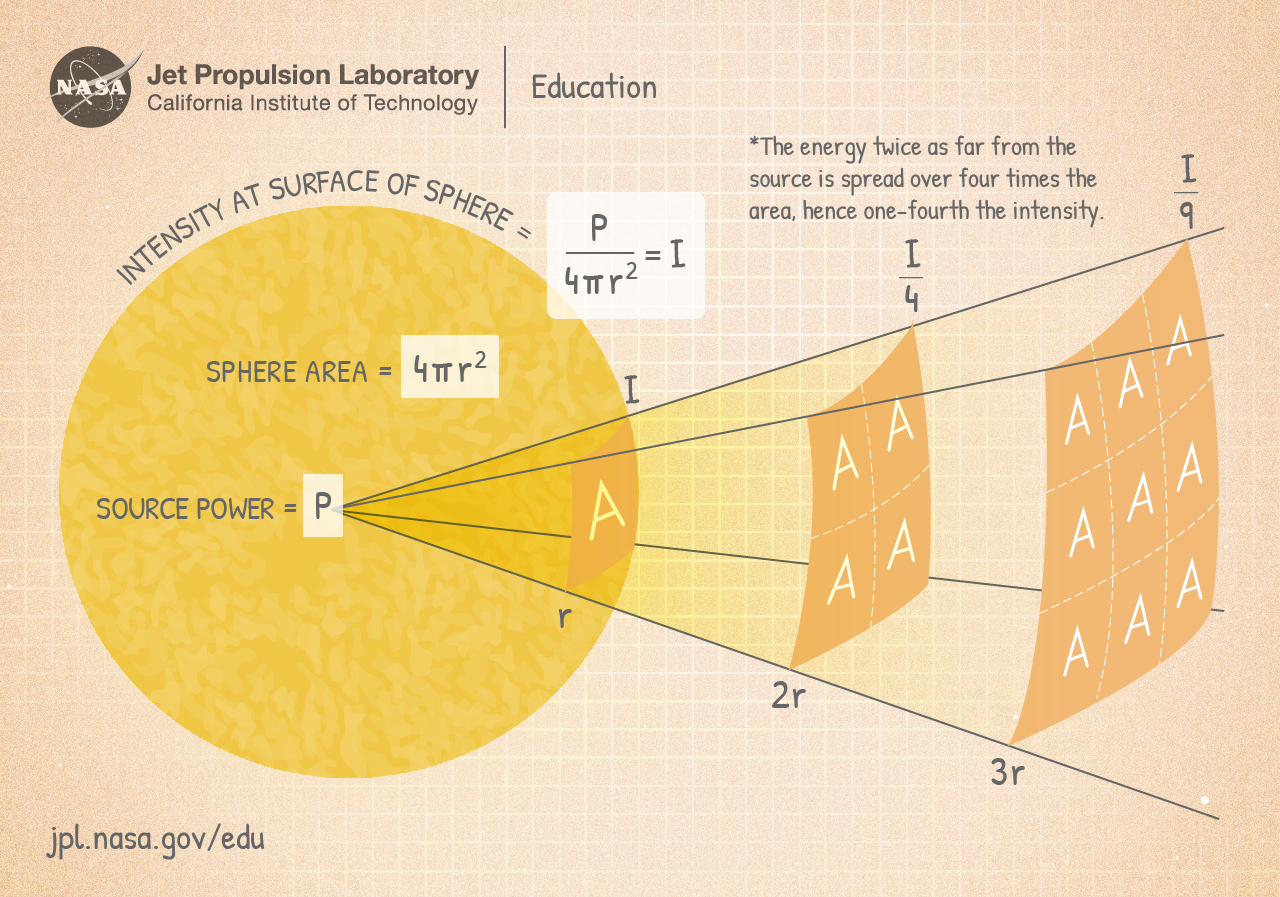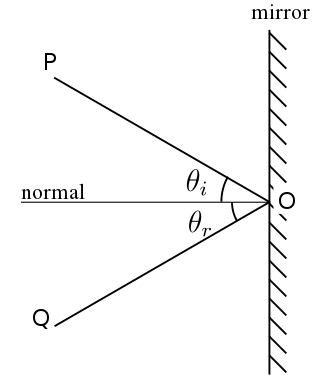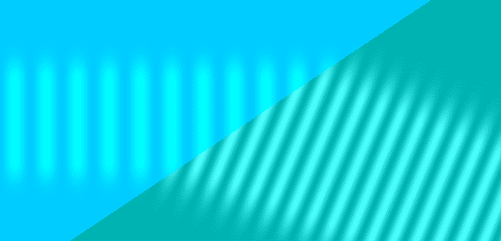Physics > Waves > Ray optics
Ray optics pictures particl of light travelling in straight lines
We will assume that light always travel in straight lines on the air or within transparent materials, unless it meets a mirror or a different transparent medium. It reflects in the mirror. If it meets a material with a different refraction index than the previous, the light ray will bend.
Every object reflects or emits light rays from all points on its surface, in all directions. For practical reasons we will only consider trays from the top of the object and from the bottom; those 2 rays will illustrate the position of the image formed nd also if it is inverted or not.
Solar radiation: The energy we receive from the Sun is a tiny portion of its total energy output. Because it emits light in all directions, there is a spherical distribution and our portion deceases with the square of the radius of the sphere, in the same manner as the surface area of the sphere decreases with the square of its radius.

Diagram illustrating that the intensity of light falls with the square of the distance. Credit: Nasa
The study of ray optics is also called geometrical optics. We will use geometrical properties of triangles, angles, sines , straight lines , etc. It is a nice application of maths.
Brief geometry and trigonometry revision:
Straight lines are the smallest distance between 2 points. Is the way light chooses to travel.
In the context of reflection and refraction of light, angles are measured with respect to the normal (image below), which is a line perpendicular to the surface. This is a scientific convention, it didn´t have to be like this necessarily.
Angles will be measured in degrees (and not in radians) so make sure that your calculator is set to degrees because if it is not, you will get the wrong numbers. To test that it is correct, calculate the sin of 90: if your calculator is set to degrees the answer will be 1.
We will be calculating sines and inverse sines (sin -1 ). The sine is a number between -1 and 1, associated to an angle. The function inverse sine gives you the angle that corresponds to a sine. So, sin -1 1 is 90. The sine is better understood by looking at the unit circle.
REFLECTION
Reflection of light also consists of a change in the direction of propagation, and is also better understood using the particle aspect of light (ray optics).
When the light ray hits the mirror, it is reflected. The angle of incidence in the mirror is equal to the angle of reflection, of this same ray. The image below shows the angles measured from the normal.

reflection of light ray in a mirror . Credit: wikipedia
Mirrors are usually made of glass with a layer of metal (silver, nickel) . A polished piece of metal can also work as a mirror. A quiet water surface also acts as a mirror. The important characteristic of a mirror is that all light is reflected equally, at the same angle of incidence.. Other surfaces, that are not mirrors, scatter the light and no image is formed. This is called diffuse reflection.

The reflection of Mount Hood in Mirror Lake - Credit : Wikipedia
ray diagramas for mirros
mirrors
minimum size to see the whole body?
how many bulbs images randall
REFRACTION
Refraction is the change in the direction of propagation of a wave when it enters a different medium. That is an effect that ocuurs with all types of waves. It will be studied using ray optics, but a example in wave optics is shown beolow for water.
Refraction can be visualised in a ripple tank. It , for example, when the waves (ripples)move between two different media. In this case the difference between the 2 media may be the depth of water. Water ripples move slower in shallow water so there will be refraction in the boundary between deeper and shallower water. The frequency does´t change when refraction occurs, but the velocity changes. As a result, the wavelength must change accordingly:, to keep the relationship: v = f λ
On the animation below we can see this situation :

wave optics representation of refraction
We will focus our study of refraction in the case of light, which is very easy to analyse using the light ray approach. And what happens is very much the same: the light bends when it ebnters a medium where it moves at a slower speed.
glass and water
